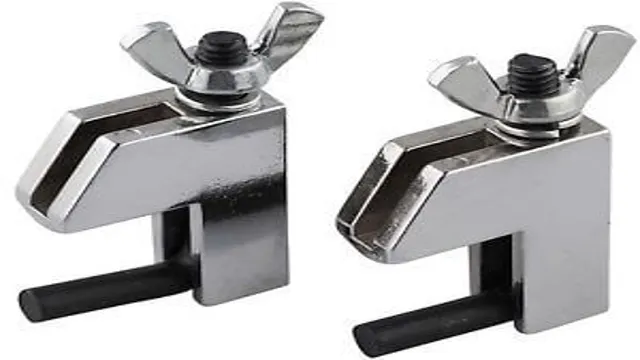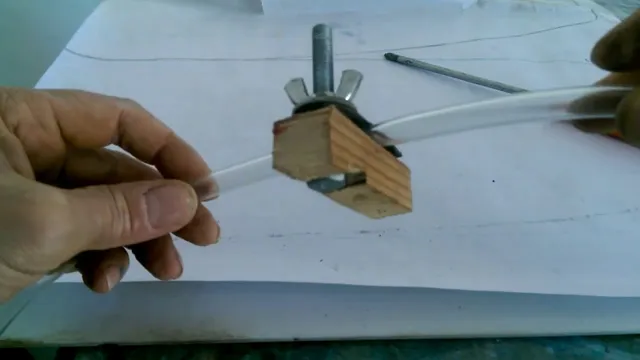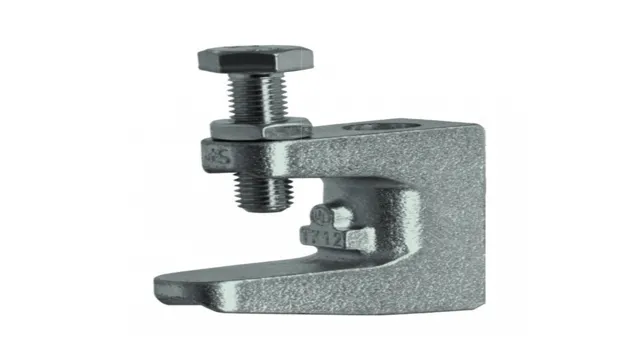Do Vacuum Lines Need Clamps? Explained and Answered by Experts

When it comes to car maintenance, many DIY enthusiasts often wonder whether or not vacuum lines need clamps. It’s a question that has puzzled even the most experienced mechanics. The truth is, vacuum lines do not always require clamps.
However, there are some situations where clamps are necessary. Failure to properly secure vacuum lines to their connectors can lead to reduced engine performance, fuel inefficiency, and even potential safety hazards. So, how do you know when to use clamps on your vacuum lines? Let’s dive in and find out.
Introduction
When it comes to vacuum lines, clamps are not always necessary, but they can be helpful. It depends on the specific application and the type of vacuum line being used. In general, vacuum lines that are made from rubber or silicone typically have enough grip to stay in place without the need for clamps.
However, if the line is under a lot of pressure or will be exposed to high heat, it may be wise to use clamps for added support and stability. Additionally, vacuum lines that are made from metal or plastic may require clamps to keep them secure. Ultimately, it’s important to consider the specific circumstances in which the vacuum line will be used and determine whether or not clamps are necessary for proper functionality.
Explaining what vacuum lines and clamps are
When it comes to understanding how your car works, the various components under the hood can seem overwhelming. Two such components are vacuum lines and clamps. Put simply, vacuum lines are an integral part of your car’s emissions system.
They help to regulate air flow and pressure to ensure that your car’s engine runs smoothly. Meanwhile, clamps are used to keep the vacuum lines in place and prevent them from coming loose or falling off. These clamps are often made of sturdy material like metal or plastic to ensure that they provide a secure grip on the vacuum lines.
Together, these two essential components work to keep your car running efficiently and ensure that it passes emissions tests. So the next time you pop the hood of your car, you can think of the important role that vacuum lines and clamps play in keeping your engine running smoothly.

Importance of a vacuum in a vehicle
When it comes to keeping your vehicle well-maintained, there are many important components to consider. One aspect that may be overlooked is the importance of a vacuum in the vehicle. A vacuum plays a crucial role in ensuring your vehicle’s interior remains clean and free of debris.
Without a vacuum, dirt, dust, and other particles would accumulate on the upholstery, carpets, and dashes, making for an unsightly and uncomfortable ride. Not only does a vacuum help to keep the interior of your car looking great, but it can also contribute to your overall health by removing allergens and other harmful particles that can aggravate respiratory conditions. So, don’t underestimate the impact that a good vacuum can have on the cleanliness and wellness of your vehicle.
Vacuum Lines and Clamps
If you’re wondering whether vacuum lines need clamps, the answer is yes, they do. Vacuum lines are responsible for carrying air into and out of various components of your vehicle’s engine, and they need to be sealed tightly to prevent leaks. Without clamps, vacuum lines could come loose or leak, which could cause issues with your engine’s performance.
Clamps keep the vacuum lines securely in place, ensuring that air flows smoothly through the system. So, it’s important to make sure that your vacuum lines are properly clamped to prevent any potential issues down the road. Don’t overlook this important aspect of maintaining your engine’s health.
Do vacuum lines need clamps?
As a car owner or mechanic, you may have come across vacuum lines in your vehicle. These are crucial components that help your car run smoothly by regulating airflow, releasing pressure, and providing vacuum signals for other parts of the engine. But do vacuum lines need clamps? The answer is yes.
Vacuum lines require clamps to secure them in place and prevent them from slipping off or becoming disconnected. Without clamps, vacuum lines can easily move around or even detach, causing a vacuum leak and affecting the performance of your car. Therefore, make sure to use clamps specifically designed for vacuum lines to keep them in place and functioning properly.
By doing so, you will help maintain the integrity of your engine and keep your car running smoothly for longer. So, always remember to clamp those vacuum lines tightly, and you’ll thank yourself later!
Consequences of not using clamps on vacuum lines
When it comes to vacuum lines, many people assume that clamps are just an optional accessory. However, neglecting to use clamps on your vacuum lines can lead to some serious consequences. For starters, without clamps, you run the risk of losing vacuum pressure and even worse, your lines could dislodge entirely.
This can result in a variety of problems, including stalling, misfires, and poor fuel efficiency. Additionally, if your vehicle’s vacuum lines are improperly secured, it can allow contaminants, like dirt and debris, to enter the system. This can lead to costly repairs down the line.
To avoid these issues and ensure the smooth operation of your vehicle, always use clamps on your vacuum lines. It’s a small investment that can save you a lot of headaches in the long run.
Different types of clamps for vacuum lines
When it comes to vacuum lines, clamps are an essential component to ensure optimal performance and prevent leaks. There are various types of clamps available, including worm-style clamps, bolt-style clamps, and cinch clamps. Worm-style clamps are the most common and are easy to install using a screwdriver, making them perfect for DIYers.
They feature a band that wraps around the hose, and a screw that tightens to secure the clamp in place. For high-pressure applications, bolt-style clamps are preferred as they offer more tension. They consist of a bolt and nut that apply even pressure around the hose.
Cinch clamps, also known as pinch clamps, are used in conjunction with specialized tools to compress the clamp around the hose, creating a tight seal. Whatever type of clamp you use, it’s essential to choose the right size and ensure it’s tightened properly to prevent any leaks. By using the right clamp for the job and installing it correctly, you can maintain a vacuum system with optimal efficiency.
Installation of Clamps on Vacuum Lines
When it comes to vacuum lines, it’s always best to use clamps. While some may think that clamps aren’t necessary, they can make a big difference in ensuring that vacuum lines are properly sealed and functioning correctly. Vacuum lines are responsible for carrying air and pressure, which means that they can easily become disconnected or leak if not secured properly.
Clamps help to keep the vacuum lines attached firmly to their fittings, preventing any leaks or disconnections. Additionally, clamps can help to protect the vacuum lines from any external factors that may cause damage, such as vibration or heat. When installing clamps on vacuum lines, be sure to use the appropriate size and type of clamp for the specific application.
This will ensure that the clamp provides the best possible seal and protection for the vacuum lines. In summary, yes, vacuum lines do need clamps!
Step-by-step guide to install clamps on vacuum lines
Installing clamps on vacuum lines is an essential maintenance task to ensure that your engine’s vacuum system performs correctly. For this task, you would need a pair of pliers and appropriately sized clamps made specifically for vacuum lines. First, identify the vacuum line that needs a clamp.
Use the pliers to open the clamp and slip it over the vacuum line. Position the clamp to where it grips on the hose overlap section but not on the end parts of the hose. Finally, use the pliers again to tighten the clamp until it securely holds the vacuum line.
Make sure not to over-tighten the clamp as this can cause the hose to crack. Repeat the process if there are multiple vacuum lines that need clamps. Regularly checking the vacuum lines for any sign of wear and tear and replacing any damaged hoses is crucial in maintaining the engine’s efficiency and prolonging its life.
By installing clamps on vacuum lines, you can prevent any unwanted vacuum leaks that could adversely affect your engine’s performance.
Things to consider while installing clamps
When it comes to installing clamps on vacuum lines, there are several things to consider. Firstly, it’s important to make sure that the clamps are the correct size for the hose they’re being attached to. This will ensure a secure and tight fit that won’t slip or leak.
Secondly, the placement of the clamps is crucial to their effectiveness. They should be placed a few inches away from the ends of the hose to avoid any potential tearing or damage. Additionally, it’s important to use the appropriate type of clamp for the job – for example, worm gear clamps are perfect for use on vacuum lines.
Lastly, always double-check that the clamps are tightened properly and secure before starting up any machinery or equipment. Taking these factors into account will result in a successful and safe installation of clamps on vacuum lines. So, make sure to keep these tips in mind when working with vacuum lines and clamps.
Conclusion
In the battle of clamps vs. no clamps for vacuum lines, both sides have their arguments. However, the ultimate conclusion is that clamps are definitely worth considering.
With the potential for leaks and loose connections, using clamps can help keep your vacuum system running smoothly and efficiently. Plus, who doesn’t love the added peace of mind that comes with knowing everything is securely in place? So whether you’re a clamp enthusiast or a skeptic, it’s time to take a closer look at the benefits of keeping those vacuum lines clamped tight. Trust us, your engine will thank you.
“
Summary of the importance of clamps on vacuum lines
Clamps play a crucial role in ensuring the efficient operation of vacuum lines. Vacuum lines are responsible for supplying vacuum pressure to various components in the engine, including the brake booster, power steering pump, and the HVAC system. If the vacuum lines are not properly clamped, they can become disconnected, causing a loss of vacuum pressure.
This can result in various issues like hard-braking, power steering problems, and poor HVAC performance. Therefore, it is important to add clamps to all vacuum hoses to ensure that they stay connected and maintain vacuum pressure under all operating conditions. By doing so, one can avoid potential safety hazards and ensure optimal performance from their vehicle.
FAQs
What are vacuum lines and what do they do?
Vacuum lines are hoses that carry vacuum from the engine to various components such as the brake booster or emissions control system. They help to create a vacuum that assists in the operation of these systems.
How do you know if your vacuum lines need to be replaced?
Signs that your vacuum lines may be damaged or worn include rough idling, decreased engine performance, and increased emissions. A mechanic can inspect the lines and determine if replacement is necessary.
Can you replace vacuum lines on your own?
Yes, it is possible to replace vacuum lines on your own if you have the proper tools and knowledge. However, it may be best to consult with a mechanic if you are not experienced in this type of repair.
Do vacuum lines need clamps to stay in place?
In most cases, yes. Vacuum lines can become loose over time due to engine vibration, and clamps help to keep them securely in place.
What type of clamps are best for vacuum lines?
Spring clamps or worm gear clamps are typically used to secure vacuum lines. It’s important to use the correct size and type of clamp for the specific hose and application.
Can using the wrong type of clamp cause problems with vacuum lines?
Yes, using the wrong type of clamp or an improperly sized clamp can cause the hose to become damaged or even come loose, which can lead to engine performance issues.
How often should vacuum lines be inspected and/or replaced?
It’s a good idea to have vacuum lines inspected regularly, such as during routine oil changes or maintenance checks. If any damage or wear is detected, replacement may be necessary to ensure proper engine performance.



